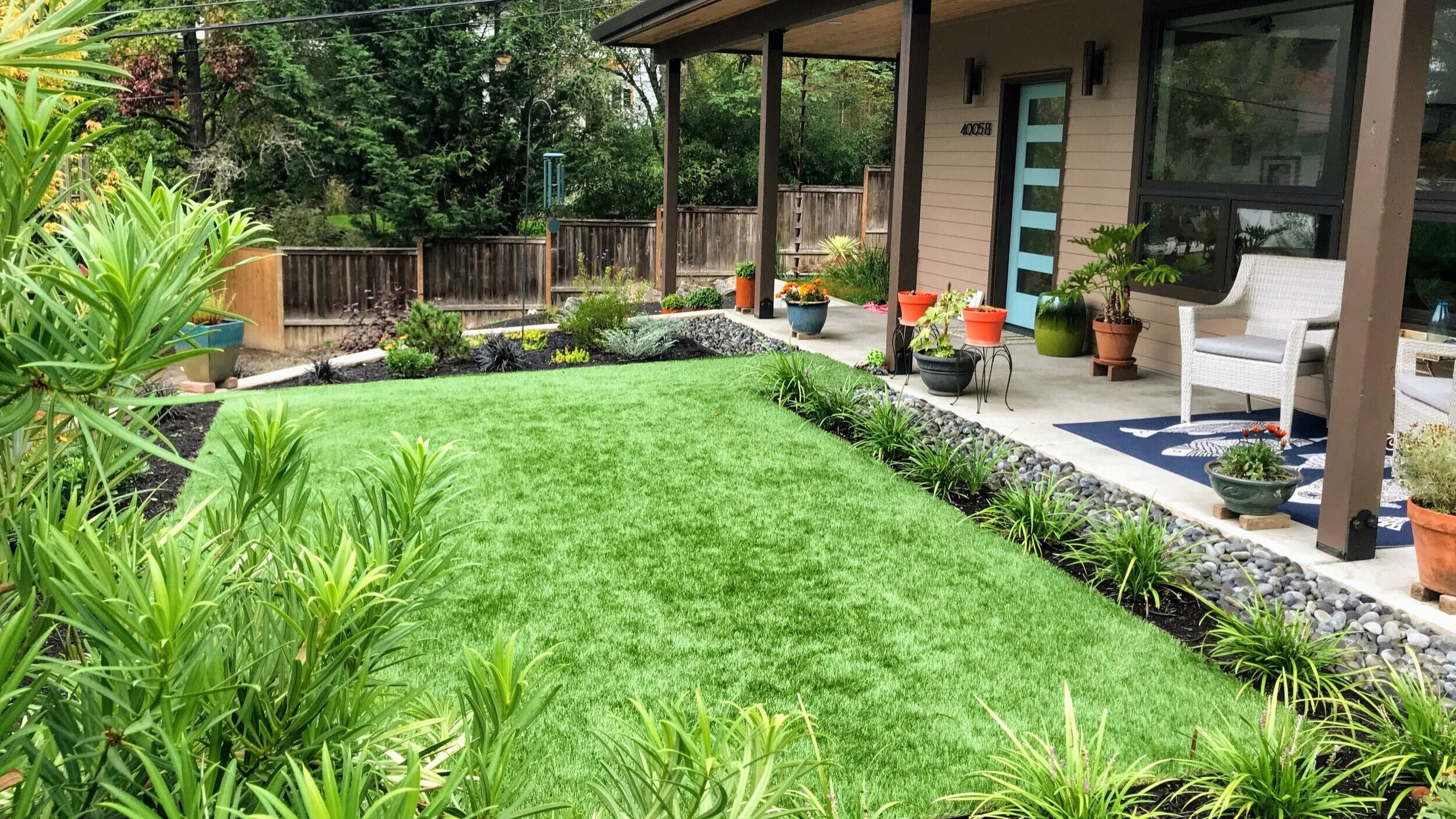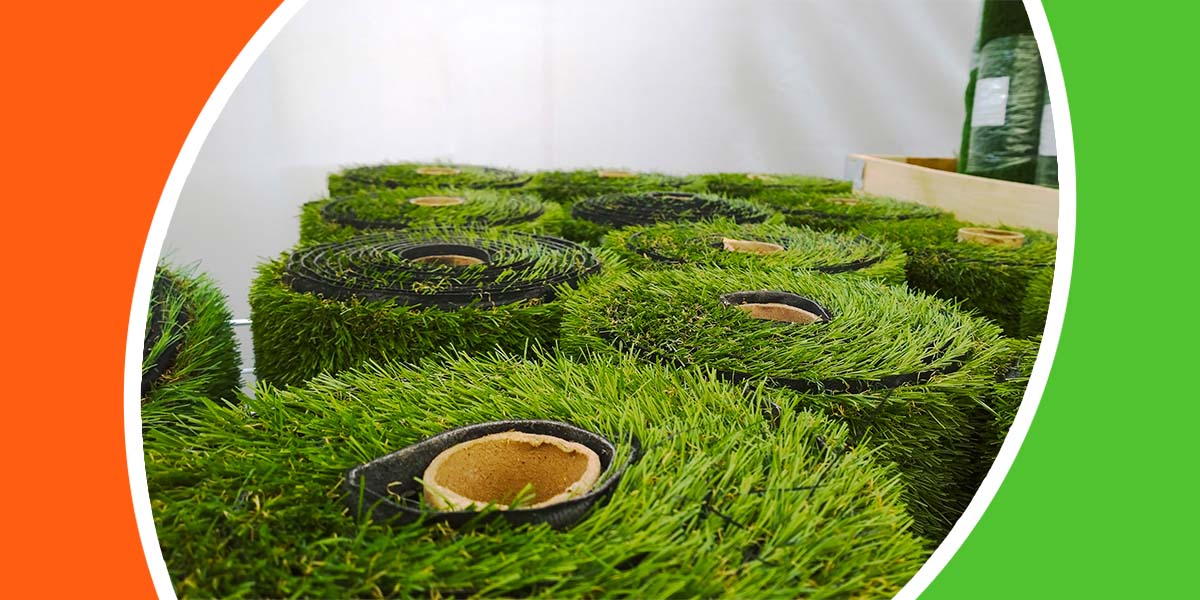Cost-Effective Turf Installation Phoenix AZ for a Hassle-Free Lawn Option
Cost-Effective Turf Installation Phoenix AZ for a Hassle-Free Lawn Option
Blog Article
Explore the Environmental Perks of Opting for Artificial Turf Solutions
The fostering of synthetic grass remedies offers a compelling possibility to address pressing ecological obstacles. By significantly reducing water use and minimizing the application of dangerous chemicals, these alternatives not just promote sustainable landscape design yet also safeguard local ecological communities. Furthermore, the lower carbon footprint related to lowered maintenance activities adds to an extra lasting method to land management. The implications of these benefits prolong past simple conservation efforts, increasing concerns regarding their long-lasting influence on habitat preservation and total ecological equilibrium. Checking out these dimensions discloses an intricate interplay worth thinking about.
Water Conservation Perks
One of one of the most substantial benefits of artificial grass is its ability to preserve water. Conventional lawn lawns need considerable irrigation, especially in locations susceptible to dry spell or water constraints. In contrast, synthetic grass does not need watering, substantially decreasing the general demand for water sources. This attribute is especially valuable in deserts where water deficiency is a pressing worry.
By eliminating the need for normal watering, synthetic grass contributes to sustainable landscape techniques and aids reduce the ecological effect of extreme water consumption. Moreover, the conservation of water expands to the reduction of runoff, which can lead to dirt erosion and river air pollution.
In addition, the setup of man-made turf allows districts and house owners to assign water resources much more efficiently, concentrating on essential uses such as drinking water and agriculture. The shift towards synthetic grass not only promotes accountable water usage yet also lines up with more comprehensive ecological goals intended at protecting all-natural sources.
As communities increasingly focus on sustainability, the water preservation benefits of synthetic grass present an engaging case for its adoption in property and commercial landscape design tasks.
Lowered Chemical Usage
The transition to man-made turf dramatically decreases the reliance on chemical therapies typically utilized in all-natural turf maintenance. Standard grass administration typically entails the application of herbicides, plant foods, and pesticides to promote growth and control pests. These chemicals can pose risks to human health, neighborhood wildlife, and the atmosphere, adding to dirt and water contamination.
On the other hand, synthetic grass removes the requirement for these unsafe materials. As soon as installed, it calls for minimal maintenance, largely containing normal cleansing and occasional infill replenishment. This decrease in chemical usage not just profits the prompt environment yet also contributes to wider eco-friendly stability. By reducing the launch of artificial compounds into the community, artificial turf advertises much healthier soil and water supply.
Additionally, the absence of chemical runoff connected with synthetic turf setups aids shield regional rivers from air pollution, supporting water life and keeping biodiversity. Arizona artificial turf. As communities progressively focus on lasting practices, choosing synthetic grass provides a viable option that straightens with environmental conservation goals. Via this change, homeowner can delight in lush eco-friendly areas without jeopardizing eco-friendly wellness, leading the way for an extra lasting future
Reduced Carbon Impact

Furthermore, the setup of synthetic grass can result in considerable water preservation. All-natural yards require significant quantities of water for irrigation, which not just adds to the carbon footprint connected with water extraction and therapy however likewise pressures local water resources. In comparison, synthetic grass needs minimal maintenance, needing no watering, thereby considerably minimizing water usage More about the author and its linked energy expenses.
Furthermore, the durability of synthetic grass adds to its reduced carbon effect. With a life expectancy of approximately 15 years or more, the demand for constant replacements is reduced, leading to much less waste and lower energy consumption in production and taking care of standard grass options. Overall, synthetic grass presents a sustainable choice for ecologically conscious landscape design.
Habitat Preservation
Habitat preservation is an important factor to consider in the argument over landscape design options, especially when comparing synthetic grass to natural grass. All-natural turf lawns usually require extensive upkeep, consisting of using chemicals, herbicides, and plant foods, which can adversely influence neighborhood communities. These chemicals can leach right into the dirt and waterways, hurting indigenous flora and animals and interrupting neighborhood habitats.
On the other hand, synthetic grass offers a possibility to minimize the eco-friendly impact of landscape design. By choosing for artificial turf, property owners can decrease the disruption of natural environments related to important site traditional grass care methods. Synthetic grass eliminates the need for dangerous chemicals, consequently shielding nearby wildlife and keeping the stability of bordering environments. Furthermore, the installment of synthetic grass can bring about the conversion of former lawn locations right into more biodiverse landscapes, such as pollinator yards or native plant locations, which can sustain regional wild animals.
Inevitably, the transition to synthetic grass not only preserves water and decreases upkeep efforts but likewise fosters an extra unified partnership between human activities and the all-natural setting, advertising habitat preservation while doing so.
Long-Term Sustainability
Long-term sustainability is a vital consider reviewing the advantages of synthetic grass over typical lawn yards. Among the most considerable advantages of synthetic grass is its longevity; it can last approximately 15-20 years with marginal maintenance, whereas all-natural yard calls for regular reseeding and replacement. This durability minimizes the requirement for continuous resources, such as water, plant foods, and chemicals, which are necessary for keeping a healthy and balanced yard lawn.
Additionally, synthetic grass adds to a decrease in carbon exhausts associated with yard treatment equipment. Traditional grass frequently call for gas-powered mowers, leaners, and blowers, every one of which add to air contamination. Turf installation phoenix az. On the other hand, synthetic grass removes the demand for such devices, promoting a cleaner atmosphere
In addition, the manufacturing of artificial turf increasingly utilizes recycled materials, boosting its sustainability account. As makers take on eco-friendly techniques, the ecological footprint of man-made turf continues to lessen.

Final Thought
The adoption of synthetic grass remedies provides look at this site considerable ecological advantages, consisting of substantial water preservation, minimized dependence on harmful chemicals, and a lower carbon impact. Furthermore, synthetic grass aids in maintaining all-natural environments by minimizing land disturbance and advertising long-term sustainability through making use of sturdy products. Collectively, these aspects emphasize the potential of synthetic grass to contribute favorably to ecological wellness and supply a sensible choice to typical landscape design techniques in a progressively resource-conscious world.
In comparison, fabricated turf does not need watering, significantly decreasing the overall demand for water sources. By decreasing the release of synthetic substances into the environment, artificial lawn promotes much healthier dirt and water systems.
Additionally, the installation of fabricated lawn can result in significant water conservation. In contrast, fabricated grass requires minimal upkeep, needing no watering, therefore dramatically minimizing water use and its associated power prices.
Report this page